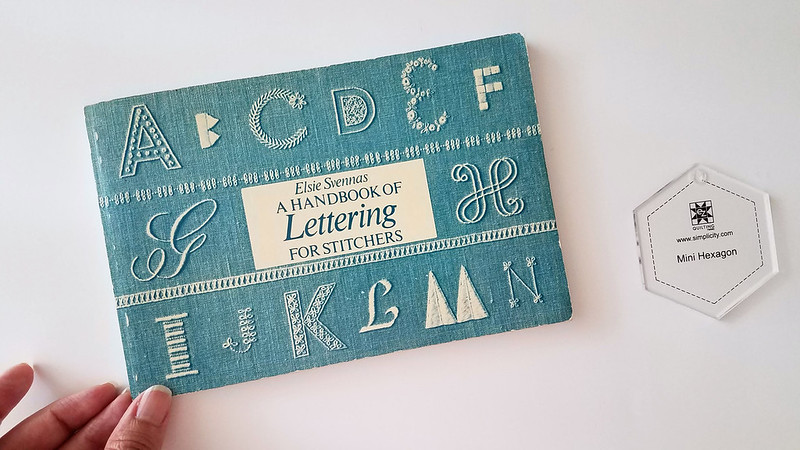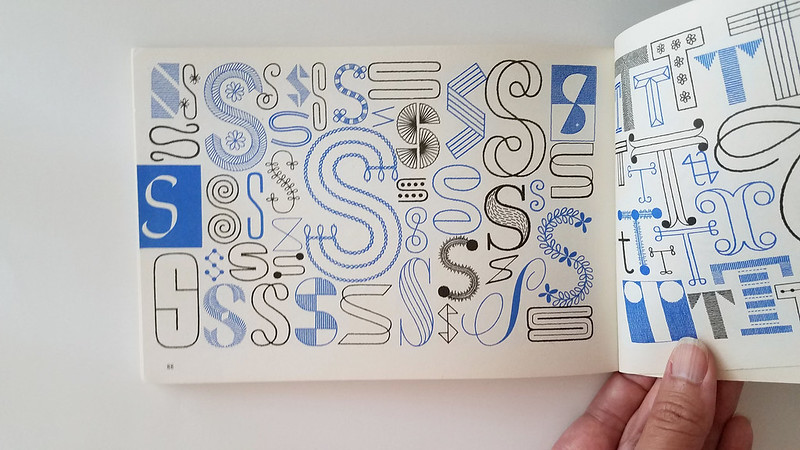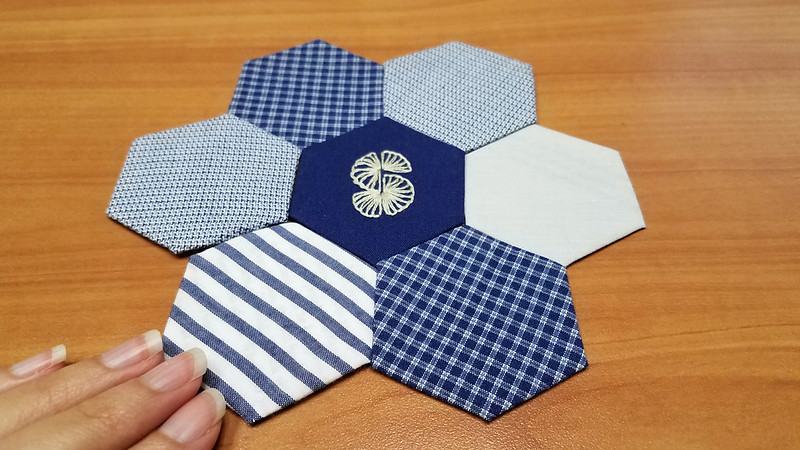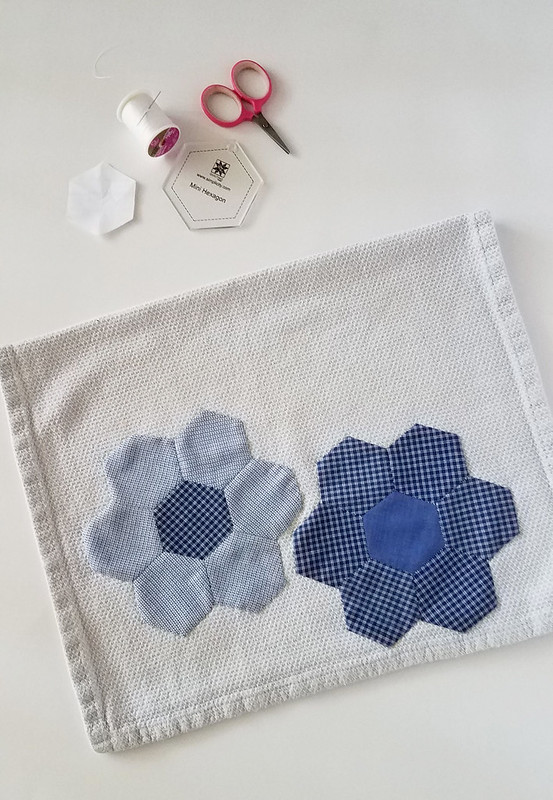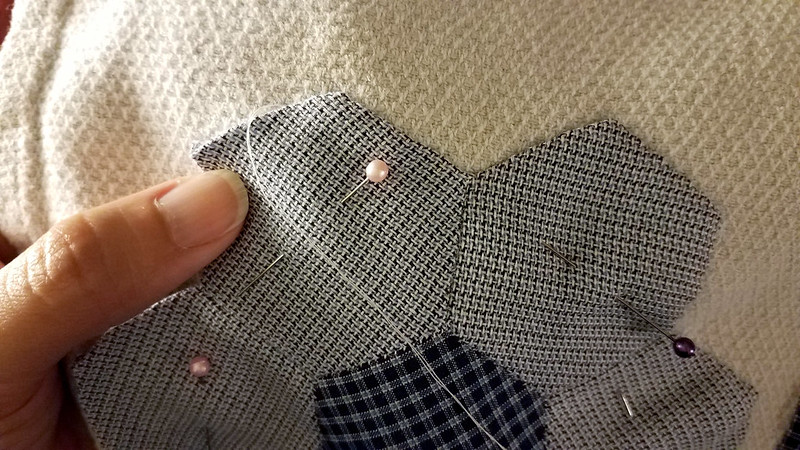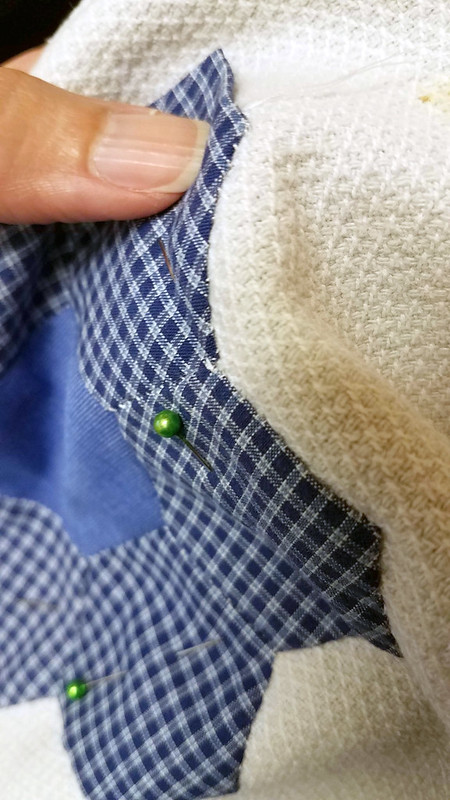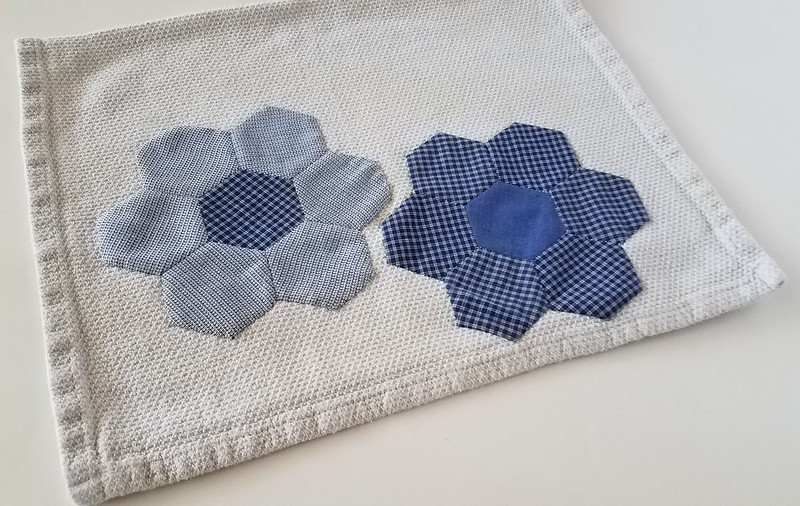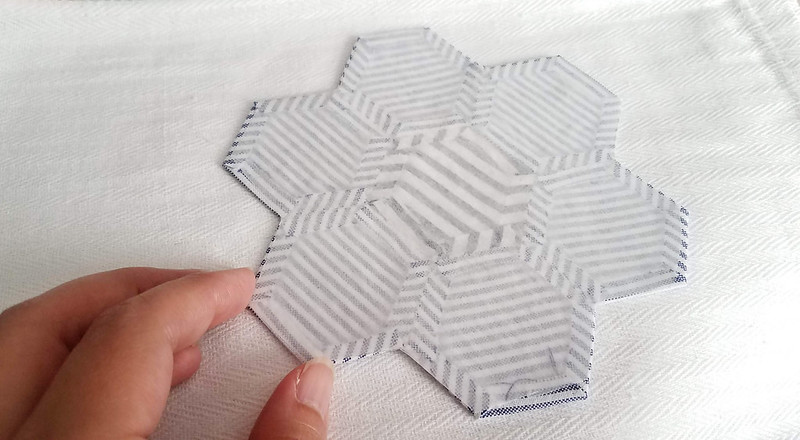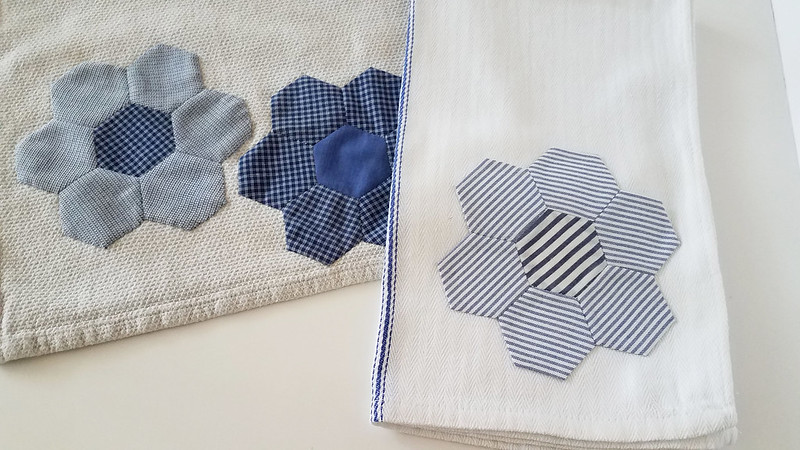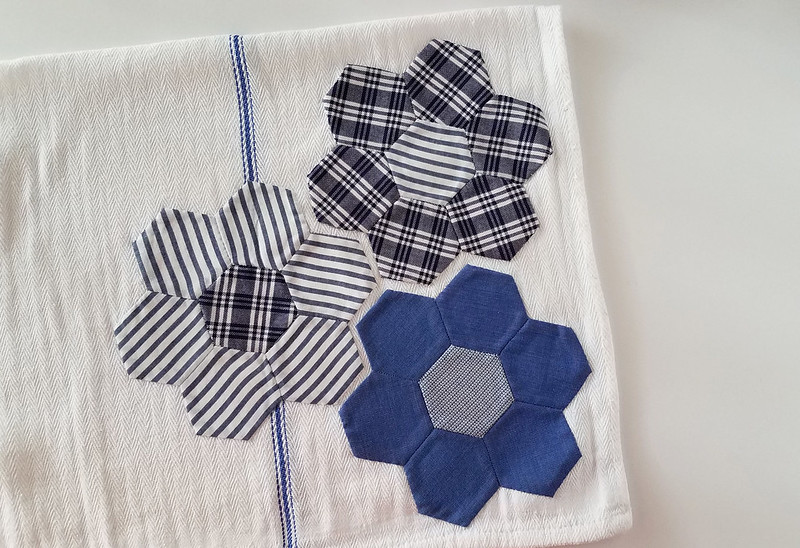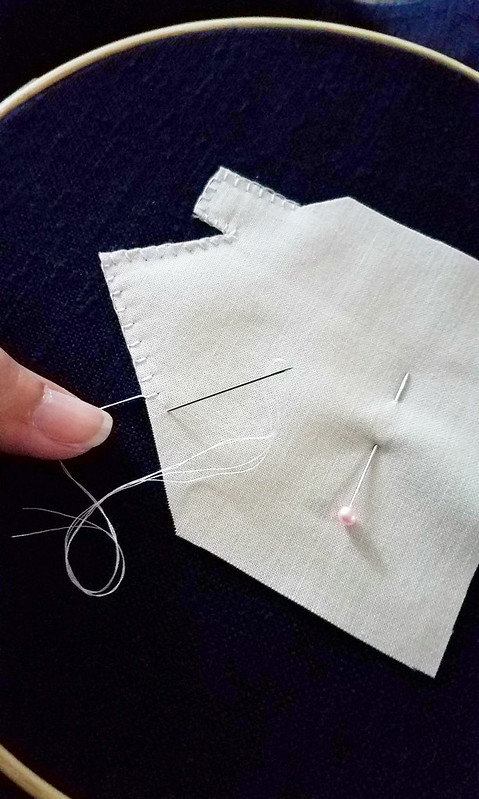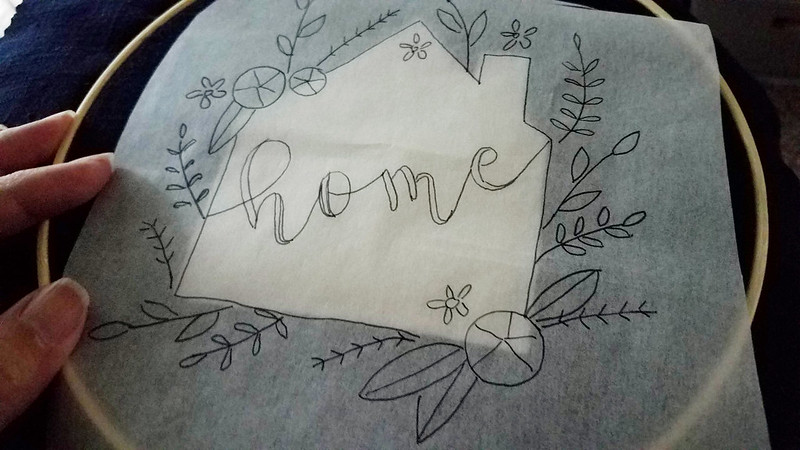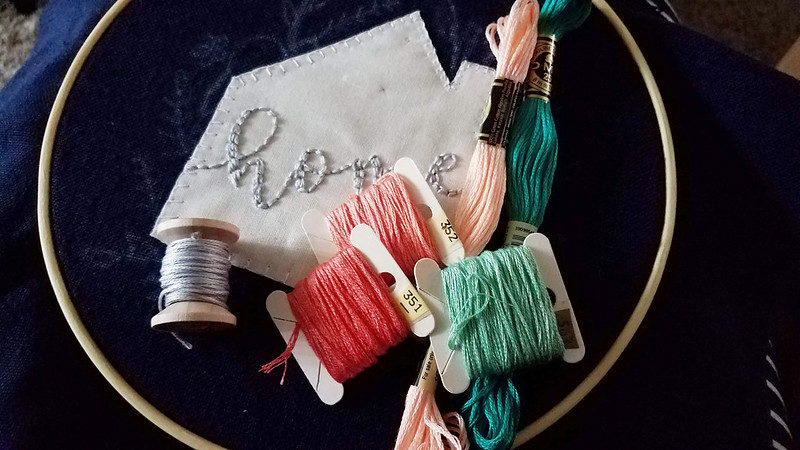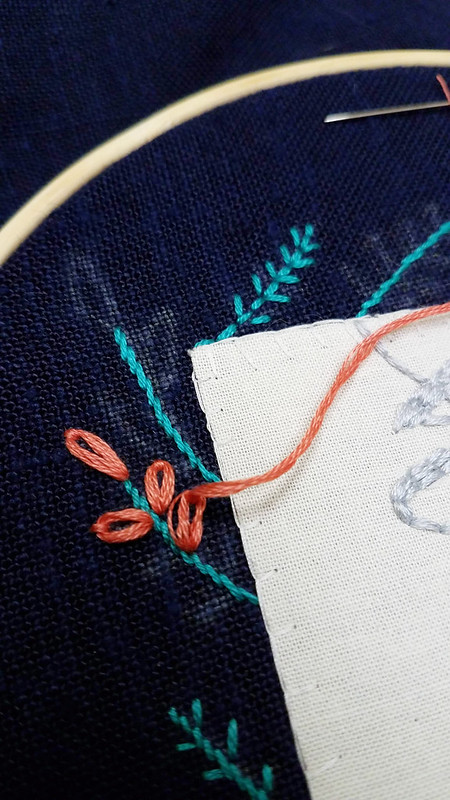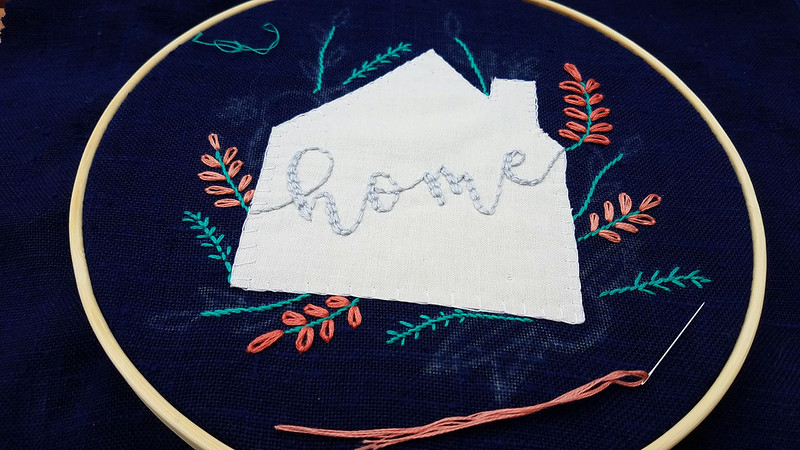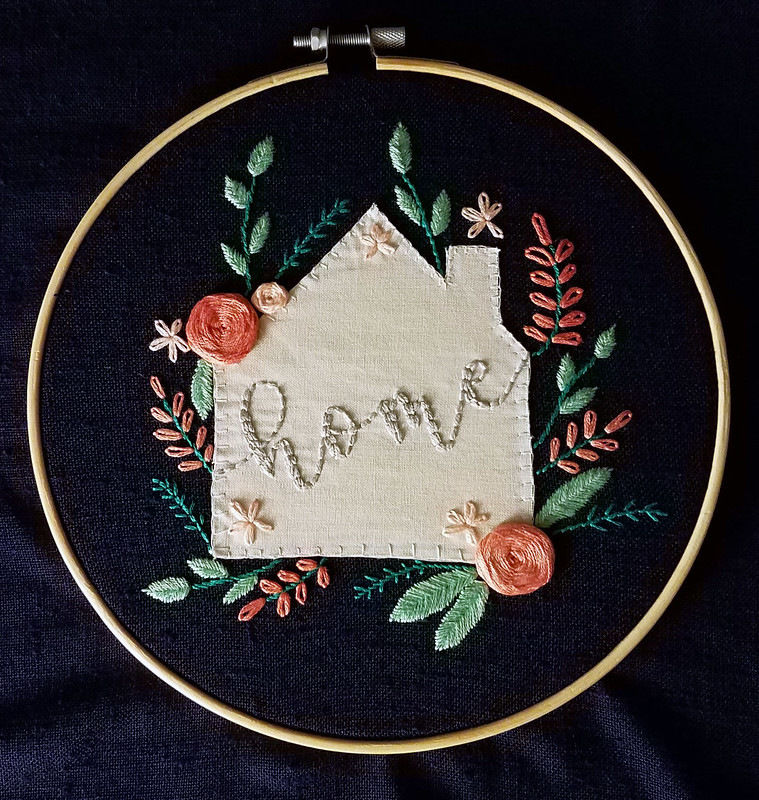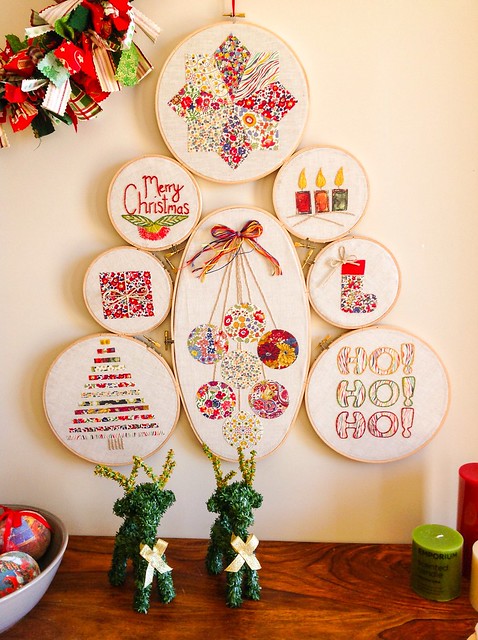So, I wanted to wrap up this month's Project a Month posts with embroidery - as mentioned this month I was stitching along with the wonderful English Paper Piecing class with Liza Lucy on Creativebug.
The final project in the class involves attaching your completed hexagons to a tea towel, I showed you my completed efforts last week, but this being an embroidery blog, I wanted to take it further and add embroidery!
When using hexagon shapes, it is so helpful at this point to have an acrylic or cut out template so you can line up your embroidered motif exactly!
I saw to my delight that the tiny test motifs I stitched earlier this year fit perfectly in my hexagon shape...
But I did want to stitch something specifically for my project, so I took out my copy of A Handbook of Lettering for Stitchers by Elsie Svennas - I've mentioned this little book before - it is delightful. Do a Google search to find the free PDF out there before you pay too much money on this out of print book!
There are some lovely pages at the back with letters in so many imaginative shapes for monograms - I found a tiny buttonhole stitch "S" that fascinated me...
I used my acrylic template to make sure it fit well within the borders, and stitched it up:
This is just one simple way to incorporate embroidery in hexagonal shapes - there are so many other imaginative ways to do so, as I've been highlighting this month in the embroidery of Emma Jones, the Jam a Month Stitch Club by Mollie Johanson, and so many others!
I hope this month's Project a Month has inspired you to try English Paper Piecing as a way to broaden your stitching horizons! As mentioned before, I highly recommend the English Paper Piecing class with Liza Lucy on Creativebug, but there are numerous wonderful resources out there!
Additional classes on EPP
I am also enjoying 2 classes by Helen Stubbings on Bluprint: Quick and Easy English Paper Piecing and English Paper Piecing: Beyond the Basics. One thing I enjoy about Bluprint (formerly Craftsy) is that they include paper patterns and go into more depth.That said, I currently have monthly subscriptions to both Creativebug AND Bluprint, and I'm enjoying going back and forth between them both! Again, when you're paying less than a Netflix, Amazon or Hulu subscription, it's hard to argue with the convenience of having inspiring content that keeps you creating!
I have 1 more inspiring resource on EPP to share with you before I close out the month, so stay tuned for that!



